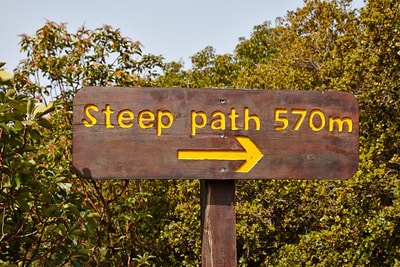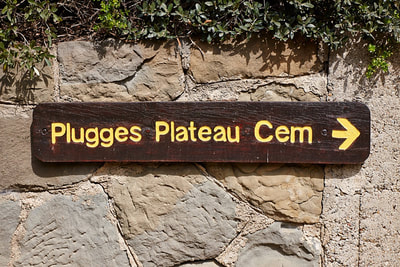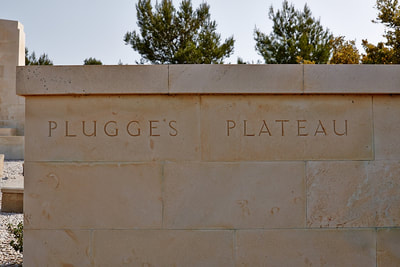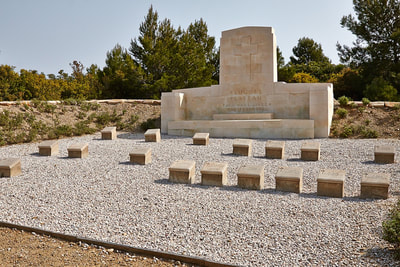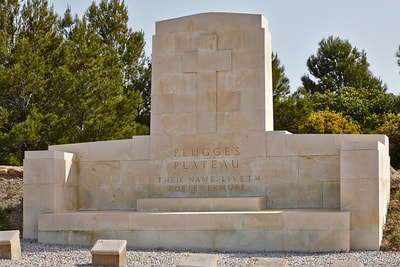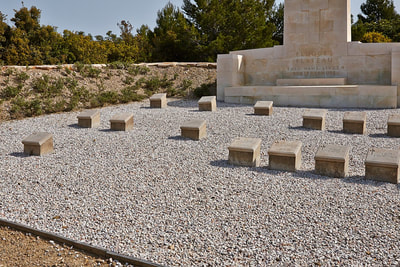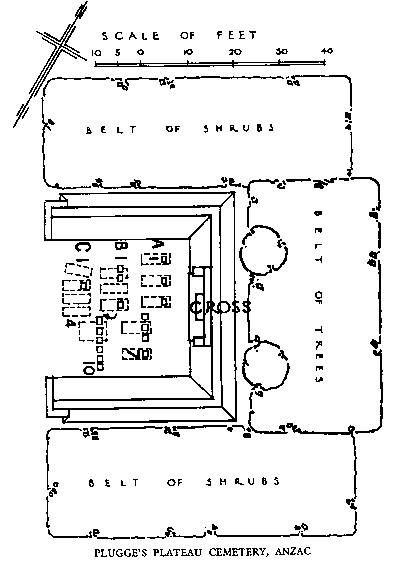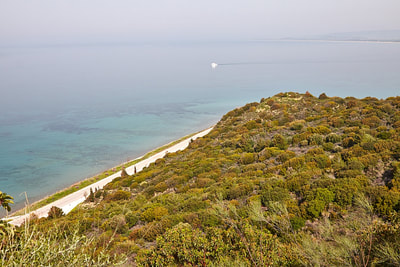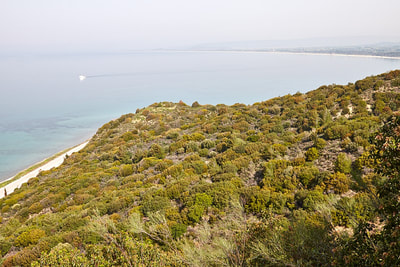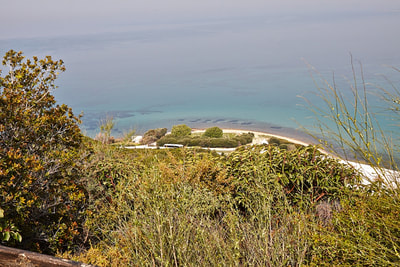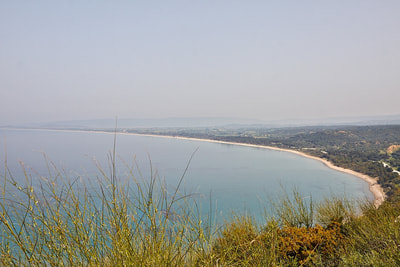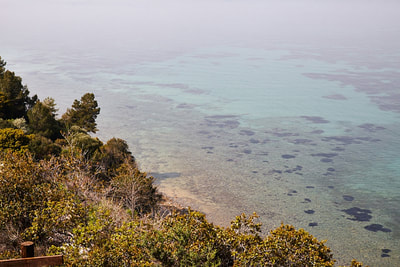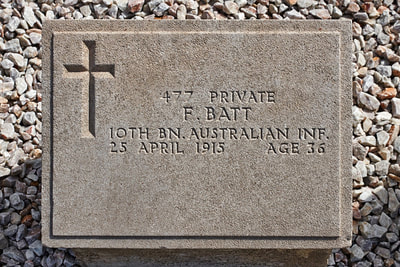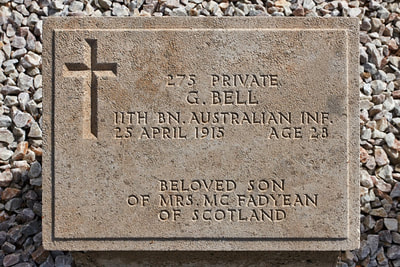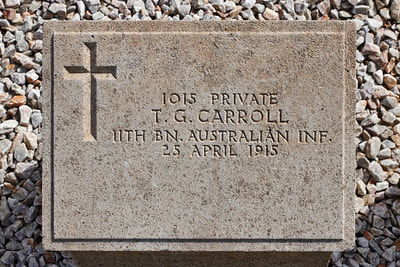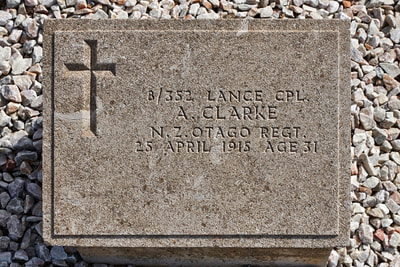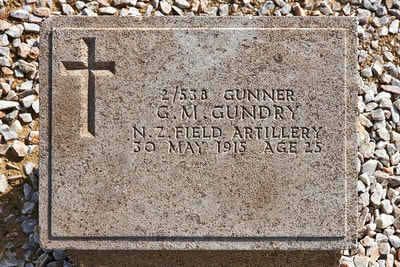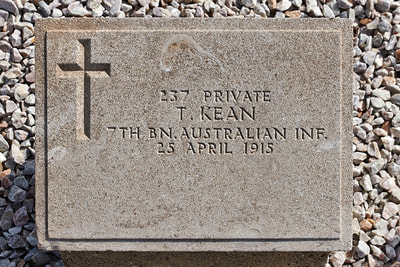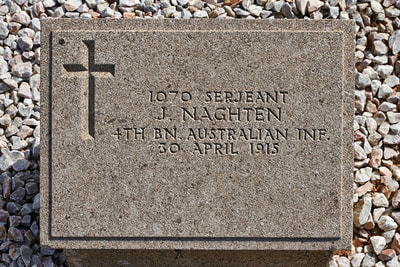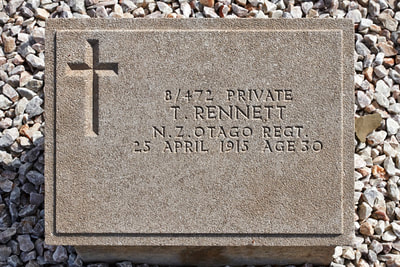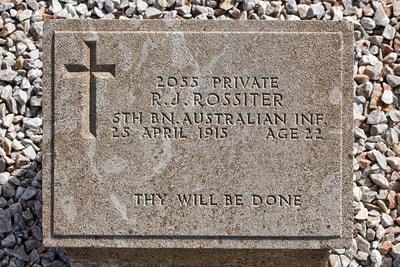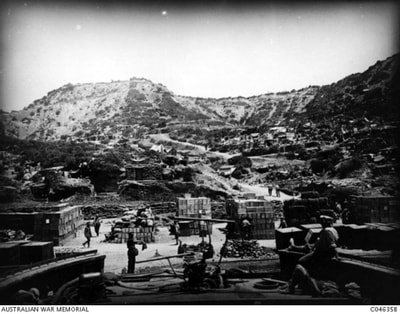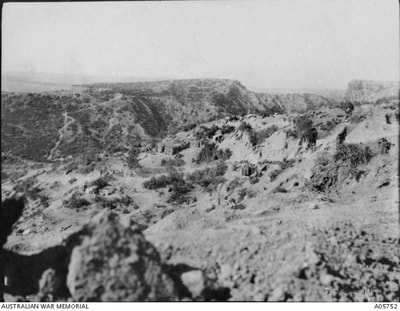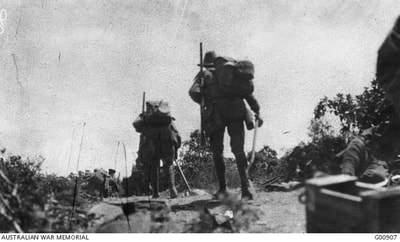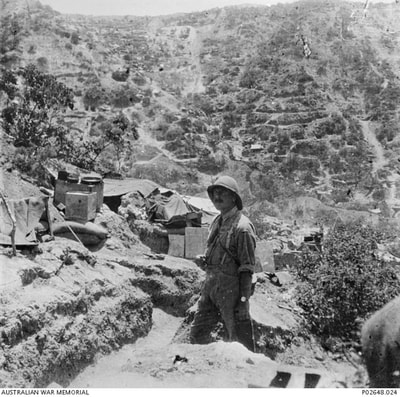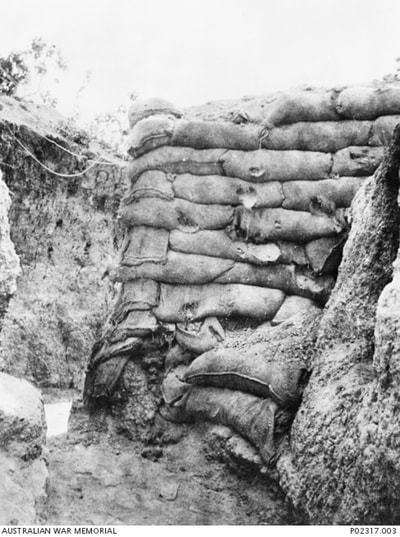PLUGGE'S PLATEAU CEMETERY (ANZAC)
Gallipoli
Turkey
Location Information
The Anzac and Suvla cemeteries are first signposted from the left hand junction of the Eceabat-Bigali road. From this junction you should travel into the main Anzac area. Plugge's Plateau Cemetery can only be reached after travelling a distance of 10.1 km's and following the signs to Shrapnel Valley Cemetery. An inclined path from the rear of this cemetery will take you to Plugge's Plateau. The cemetery is on the north-west corner of the plateau.
Visiting Information
The Cemetery is permanently open and may be visited at any time.
The pathway leading to the cemetery is approximately 750 metres from the main road, up a very steep track. The location/design of this site, makes wheelchair access impossible.
Historical Information
The eight month campaign in Gallipoli was fought by Commonwealth and French forces in an attempt to force Turkey out of the war, to relieve the deadlock of the Western Front in France and Belgium, and to open a supply route to Russia through the Dardanelles and the Black Sea.
The Allies landed on the peninsula on 25-26 April 1915; the 29th Division at Cape Helles in the south and the Australian and New Zealand Corps north of Gaba Tepe on the west coast, an area soon known as Anzac.
Plugge's Plateau was captured by the 3rd Australian Infantry Brigade on 25 April and named later from the commander of Auckland Battalion, Colonel A Plugge, CMG, whose headquarters were there. It became a battery position, a reservoir, and a position on the 'Inner Line' of defences. The Anzac Headquarters were on its western slopes.
The cemetery contains 21 First World War burials, four of them unidentified.
Identified Casualties
Australian, 12
New Zealand, 5
The Anzac and Suvla cemeteries are first signposted from the left hand junction of the Eceabat-Bigali road. From this junction you should travel into the main Anzac area. Plugge's Plateau Cemetery can only be reached after travelling a distance of 10.1 km's and following the signs to Shrapnel Valley Cemetery. An inclined path from the rear of this cemetery will take you to Plugge's Plateau. The cemetery is on the north-west corner of the plateau.
Visiting Information
The Cemetery is permanently open and may be visited at any time.
The pathway leading to the cemetery is approximately 750 metres from the main road, up a very steep track. The location/design of this site, makes wheelchair access impossible.
Historical Information
The eight month campaign in Gallipoli was fought by Commonwealth and French forces in an attempt to force Turkey out of the war, to relieve the deadlock of the Western Front in France and Belgium, and to open a supply route to Russia through the Dardanelles and the Black Sea.
The Allies landed on the peninsula on 25-26 April 1915; the 29th Division at Cape Helles in the south and the Australian and New Zealand Corps north of Gaba Tepe on the west coast, an area soon known as Anzac.
Plugge's Plateau was captured by the 3rd Australian Infantry Brigade on 25 April and named later from the commander of Auckland Battalion, Colonel A Plugge, CMG, whose headquarters were there. It became a battery position, a reservoir, and a position on the 'Inner Line' of defences. The Anzac Headquarters were on its western slopes.
The cemetery contains 21 First World War burials, four of them unidentified.
Identified Casualties
Australian, 12
New Zealand, 5
Views from the Cemetery
Click on Individual Headstone for Details

477 Private
Frank Batt
10th Bn. Australian Infantry, A. I. F.
25th April 1915, aged 36 (sic)
Son of John Batt; husband of Harriett L. Batt, of 11, North Parade, Camborne, Cornwall, England. Native of Camborne.
Studio portrait of 477 Private (Pte) Frank Batt, H Company, 10th Battalion, of Broken Hill, NSW. He served in the East Surrey Regiment, British Army for 6 years including the Boer War before enlisting in the AIF. Pte Batt embarked from Adelaide, SA onboard HMAT Ascanius (A11) on 20 October 1914. Pte Batt served on Gallipoli and was killed in action on 25 April 1915. He was 33 sic years of age.
Click on image to enlarge
Frank Batt
10th Bn. Australian Infantry, A. I. F.
25th April 1915, aged 36 (sic)
Son of John Batt; husband of Harriett L. Batt, of 11, North Parade, Camborne, Cornwall, England. Native of Camborne.
Studio portrait of 477 Private (Pte) Frank Batt, H Company, 10th Battalion, of Broken Hill, NSW. He served in the East Surrey Regiment, British Army for 6 years including the Boer War before enlisting in the AIF. Pte Batt embarked from Adelaide, SA onboard HMAT Ascanius (A11) on 20 October 1914. Pte Batt served on Gallipoli and was killed in action on 25 April 1915. He was 33 sic years of age.
Click on image to enlarge

275 Private
George Bell
11th Bn. Australian Infantry, A. I. F.
25th April 1915, aged 28.
Son of Jane McFadyean Bell. Native of Scotland.
Studio portrait of 275 Private (Pte) George Bell, 11th Battalion. Pte Bell, a labourer and native of Scotland, enlisted from Coorow on the Midland Railway, WA on 17 August 1914. He was killed in action at the landing at Gallipoli on 25 April 1915 but his body wasn't recovered from no-mans land until 1919. Pte Bell is buried at the Plugge's Plateau Cemetery. He was 24.
Click in image to enlarge
George Bell
11th Bn. Australian Infantry, A. I. F.
25th April 1915, aged 28.
Son of Jane McFadyean Bell. Native of Scotland.
Studio portrait of 275 Private (Pte) George Bell, 11th Battalion. Pte Bell, a labourer and native of Scotland, enlisted from Coorow on the Midland Railway, WA on 17 August 1914. He was killed in action at the landing at Gallipoli on 25 April 1915 but his body wasn't recovered from no-mans land until 1919. Pte Bell is buried at the Plugge's Plateau Cemetery. He was 24.
Click in image to enlarge

2/117 Serjeant
William Richard Bowden
New Zealand Field Artillery
17th May 1915, aged 25.
Son of John and Ada Bowden, of 180, Broughton St., Sydenham, Christchurch, New Zealand. Native of Cardiff, Wales.
William Richard Bowden
New Zealand Field Artillery
17th May 1915, aged 25.
Son of John and Ada Bowden, of 180, Broughton St., Sydenham, Christchurch, New Zealand. Native of Cardiff, Wales.
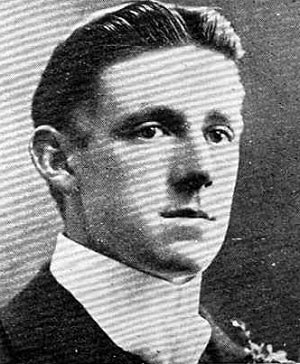
8/472 Private
Thomas Rennett
Otago Regiment, N. Z. E. F.
25th April 1915, aged 30.
Thomas Rennett
Otago Regiment, N. Z. E. F.
25th April 1915, aged 30.
Outdoor group portrait of nine soldiers of the 6th Battalion on top of the Great Pyramid of Cheops, Egypt. Identified from left to right, back row: 2055 (Private) Reginald James Rossiter from North Carlton, Victoria (killed in action at Gallipoli on 25 April 1915); 143 Pte Reginald Thronton Watson from Fitzroy, Victoria (killed in action at Gallipoli on 25 April 1915); 63 Pte Thomas Hewett Boyd from Alphington, Victoria (later Lieutenant and killed in action in Belgium on 4 October 1917) [see image H05600]; 66 Pte John Brown from North Fitzroy, Victoria (killed in action at Gallipoli on 25 April 1915); and 64 Pte Francis Patrick Brennan from Oakleigh, Victoria (killed in action at Gallipoli on 25 April 1915).
Front row: 84 Pte Charles William Fossett from Abbotsford, Victoria (wounded in action at Gallipoli but continued to serve and returned to Australia in November 1918); 51 Corporal Herbert Maurice Robertshaw from North Carlton, Victoria (killed in action at Gallipoli on 25 April 1915) [see image DAOD0230]; 2019 Pte Neil Wells from Footscray, Victoria (died of wounds received at Gallipoli on 10 June 1915); and 148 Pte James Harold Ryan from Northcote, Victoria (killed in action at Gallipoli on 7 August 1915). Of the nine soldiers in this image, eight died during the war and five of those were killed in action on the first day at Gallipoli on 25 April 1915.

